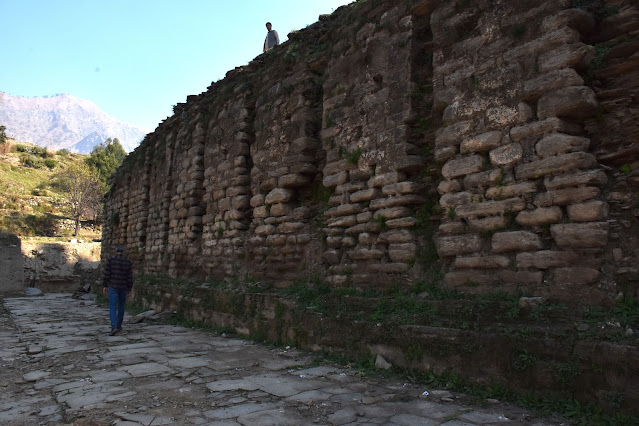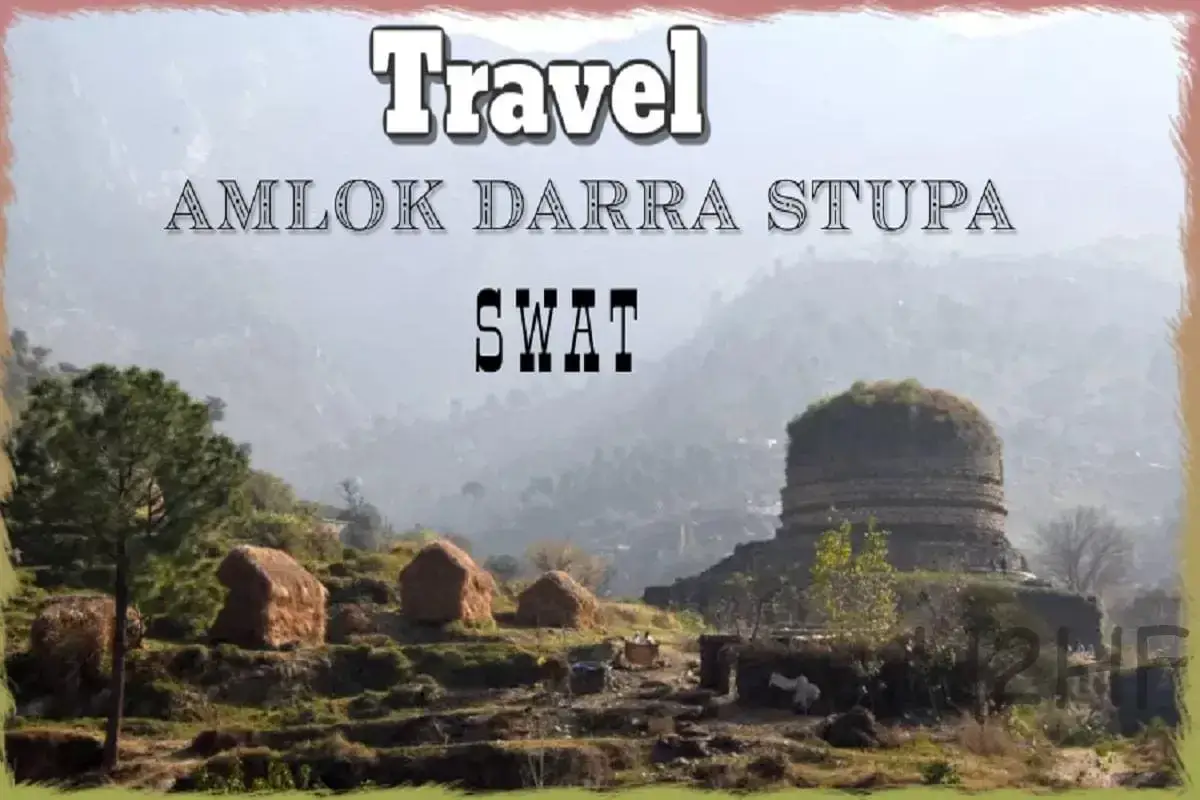Swat Valley’s historic Amlok-Dara Stupa
The Amlok-Dara stupa is located in the Swat valley of Pakistan. It is a part of the civilization of Amluk-Gandharan Dara. The stupa is thought to have been built in the third century.
The stupa was discovered in 1926 by archaeologist Aurel Stein.

Table of Contents
ToggleAmlok Dara Stupa Distance from Islamabad
This stupa is 226 km from Islamabad and it takes 3 hours to reach there
Route to the Stupa site
Route to the stupa site is Islamabad-Kernel Sher Khan Interchange Khyber-Pakhtunkhwa-last toll plaza of swat motorway (Pul Saokae) – Barikot – Nawagae – Amluk Dara.

Road Condition
The complete route is properly metaled except the last 25 minutes are through narrow lanes of the Darra and dirt track. You can take any type of car there.

Safety and Security
The locals are friendly and some even speak English, so there is not much to worry about in the daytime
Where to eat
There are several roadside hotels in Barikot.

Amlok Dara structure
It once stood nearly as tall as Rome’s Pantheon and still remains a commanding structure on a ledge of a narrow gorge. Except for the deep tunnel bored through the side of the stupa by robbers, the Stupa is relatively untouched. The stupa is crowned by a hemispherical dome measuring 7 meters in height and 2 meters in diameter.
Swat Buddhism was shielded by geography.
Swat was a strategic area because of its location connecting North India through mountainous Central Asia to the kingdoms and empires beyond. It frequently formed the borders of larger empires, with rulers from India failing to expand north over the mountains and rulers from the north of the mountains failing to expand south into the Indian plains. One of the early invaders, however, came from much further afield.

Swat was conquered by Alexander.
Alexander the Great (336-323 BC) fought a famous battle here in Swat. His army marched east from Bagram, the city he founded in the kingdom of Kapisa, and fought numerous battles to take control of the region. Some of these took place in the Swat Valley and culminated in Alexander’s victory.
“Aornos” was under siege, a seemingly impregnable steep-sided mountain with a flat top watered by a spring where locals had sought refuge. Scholars think two locations stand out as the most likely candidates for being Aornos. Aurel Stein chose Pir Sar, a mountain rising west of the Indus valley. The consensus now points to Mount Ilam, the summit of which is a day’s walk from the Amluk Dara Stupa.

The Legend of “Apalala”
Legend has it that the Apalala, a serpent king, lived in a lake high in the Hindu Kush peaks. Every year, he demanded a grain offering from the people who lived in the Swat river valley, which flowed from the lake. The valley was fertile, hence its name, Udyna (garden). But when the people refused to make the offering one year, Apalala flooded their lands in retaliation. The people duly sought Buddha’s assistance. He visited the valley, converted Apalala, and left his footprint on a rock to commemorate his visit.

The monastery was designed to look like a pleasure garden
lexicon in the first century AD demonstrates how closely monasteries were linked to the Indian ideal of a garden with a pleasure grove. Buddhist monks deliberately attempted to integrate their institutions into the garden or saw them as belonging to that cultural category.
A magnificent view down the fertile valley to Thana tens of miles away, picturesque rocky spurs all around, clumps of firs and cedars higher up, and the dried-up spring nearby contribute to nirvana for even those who do not seek future bliss
Rock-cut or other seats were frequently placed at points that provided a specific view.

Faxian, a Chinese traveler from 403 AD
Faxian, who arrived around 403, was the first to leave a record. He stayed for several months, visiting the Buddha’s footprint as well as the rock where he dried his clothes and where he converted ‘the wicked serpent.’ He mentioned that there were 400 Buddhist monasteries in the area – although evidence of about 25 remains.
Read

Xuan zag, a Chinese traveler, come in 630 AD.
Xuanzang followed in 630 and Hyecho, a Korean monk, in 727. Buddhism had declined in the plains below Swat by their time, but the valley provided an enclave. Buddhist shrines and temples were rebuilt into the tenth century, long after Buddhism had vanished from its Indian homeland.

What does Amlok Dara mean?
Amluk or Amlok can also be written as Amlook is Persimmon fruit in local lingo and it is good for calcium and lower blood pressure.
Darra is a gorge in the local language.

Conclusion
Do visit Amlok Dara if you enjoy seeing what your ancestors were up to in those times.
If you need my help in arranging a visit, do inbox me


This is a superb example of how rich in history the area is. It’s not just that these ancient building exist, giving us clues as to the cultures of the past. But also that there were visitors as far off as China in the fifth and seventh centuries. Travel in those days was not easy, and trips like this were generally not taken.
The Chinese visitors would have had to cross long distances through either desert or mountains, or sail even greater distances around southeast Asia. This would have been like Romans visiting in those days – and Romans never travelled nearly that far.